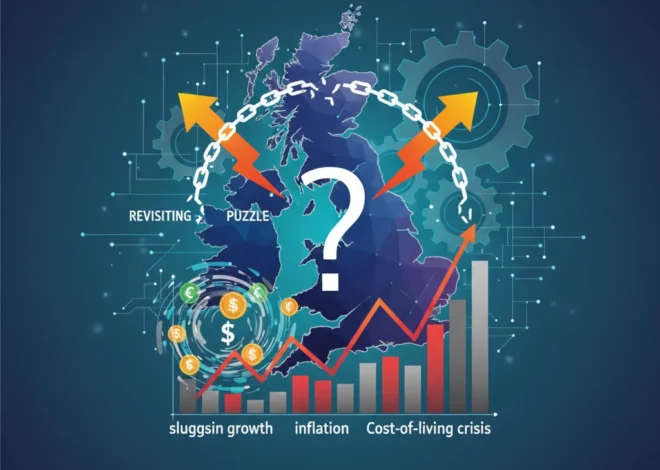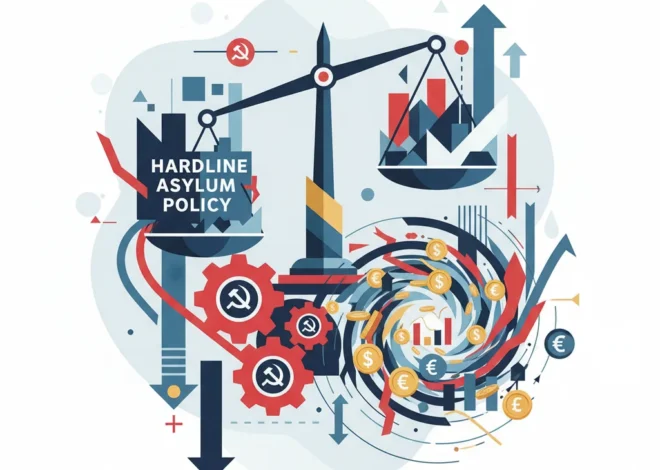
The £1,000 Pedal-Powered Problem: Why UK Cycle Scheme Changes Matter to the Economy
The Unseen Economic Engine of the Daily Commute
For millions across the United Kingdom, the daily commute is a ritual—a predictable rhythm of traffic jams, train schedules, and morning coffee. Yet, beneath this routine lies a complex web of personal finance decisions and government policies that quietly shape our economy. One of the most popular, yet often underestimated, of these policies is the Cycle to Work scheme. It’s more than just a way to get a tax-free bike; it’s a powerful tool for public health, environmental progress, and corporate wellness. However, as a recent letter to the Financial Times highlighted, potential changes to this scheme are sparking fear among UK parents, revealing cracks in a policy that may no longer fit the modern family’s needs. This isn’t just a concern for cyclists; it’s a canary in the coal mine for investors, business leaders, and anyone interested in the intersection of fiscal policy, green technology, and the UK economy.
Deconstructing the Cycle to Work Scheme: A Primer on Smart Policy
Before diving into the controversy, it’s crucial to understand the mechanics and intent behind the Cycle to Work scheme. Launched in 1999, it was designed as a tax-efficient employee benefit to encourage healthier journeys to work and reduce environmental pollution. The core of the scheme is a salary sacrifice arrangement. An employee effectively “hires” a bike from their employer for a set period, paying for it from their pre-tax salary. This simple mechanism provides significant savings—typically between 25% and 42%—on the cost of a new bicycle and accessories.
The benefits were designed to be threefold:
- For Employees: A substantial discount on a mode of transport that improves physical and mental health, while also saving money on commuting costs.
- For Employers: A healthier, more productive workforce, reduced car parking demand, and a tangible demonstration of corporate social responsibility (CSR) and ESG (Environmental, Social, and Governance) commitments.
- For the Government: A cost-effective way to achieve public health goals, reduce NHS burdens, cut urban congestion, and lower carbon emissions.
The scheme has been a resounding success. According to a 2023 report from Cyclescheme, one of the largest providers, 61% of participants said the scheme was their primary motivation for starting to cycle to work. The economic ripple effects are significant, boosting a domestic cycling industry and supporting thousands of jobs in retail and manufacturing.
The Corporate Handshake: How Swiss Business Leaders Brokered a Landmark US Tariff Reduction
The E-Cargo Bike Conundrum: Where Policy Meets Reality
The crux of the current issue, as articulated by the co-founders of Solve The School Run, lies in the evolution of cycling technology and family logistics. The traditional two-wheeled commuter bike is no longer the only option. The rise of e-bikes, and particularly e-cargo bikes, has transformed the bicycle from a solo commuter vehicle into a viable car replacement for families. These bikes can easily carry two children, a week’s worth of groceries, and still navigate city streets with ease.
This is where the policy’s limitations become apparent. High-quality e-cargo bikes, which are essential for safely transporting children, often cost well over £2,000, and sometimes upwards of £5,000. While the original £1,000 cap on the scheme was removed in 2019, many employers still impose their own, often lower, limits due to administrative preferences or the terms offered by scheme providers. This creates a financial barrier that prevents families from making the switch. The fear is that future government “simplification” of the scheme could formalize these lower caps, effectively excluding the very vehicles that offer the greatest potential for reducing car dependency for the “school run”—a major source of peak-time congestion and pollution.
To understand the financial trade-off for a family, consider the annual costs of different transport methods.
| Transport Method | Estimated Annual Running Cost | Key Considerations |
|---|---|---|
| Family Car (e.g., SUV) | £3,500 – £5,000+ | Includes fuel, insurance, tax, maintenance, depreciation. Subject to fuel price volatility. |
| E-Cargo Bike | £300 – £600 | Includes electricity, insurance, maintenance. High initial purchase cost is the main barrier. |
| Public Transport (2 adults, 2 children) | £2,000 – £4,000+ | Dependent on location and frequency of use. Can be inflexible for multi-stop journeys like school + work. |
The data clearly shows that while the initial investment in an e-cargo bike is high, the long-term economics are incredibly favorable. A policy that facilitates this initial investment could unlock enormous savings for families and significant environmental benefits for society.
From Commuter Perk to Macroeconomic Lever
This debate over bike prices is more than a niche issue; it’s a window into the broader economic landscape. For investors and finance professionals, it touches on fiscal policy, consumer spending, and the burgeoning green economy.
Fiscal Policy and the Economy: Salary sacrifice schemes are a form of tax expenditure. The government forgoes tax revenue in the short term to incentivize behavior that yields long-term economic benefits. A healthier population reduces long-term strain on the NHS, and less congestion improves overall economic productivity. Any move to curtail the scheme’s effectiveness must be weighed against these positive externalities. From an economics perspective, it’s a classic case of balancing direct tax receipts against indirect, but substantial, societal gains.
The Green Stock Market and Investing: The Cycle to Work scheme is a direct subsidy to the green transportation sector. Companies like Halfords (a major UK bike retailer) and global manufacturers such as Giant and Trek have a vested interest in its success. Investors focused on ESG principles watch such policies closely. A weakening of the scheme could be a bearish signal for this sector, potentially impacting stock market valuations and slowing private investment in green financial technology and manufacturing.
Fintech and the Future of Employee Benefits: The administration of Cycle to Work schemes is a prime example of financial technology in action. Fintech platforms like Cyclescheme, Green Commute Initiative, and Vivup have built entire business models around managing these salary sacrifice programs, integrating with company payrolls, and partnering with thousands of retailers. This ecosystem demonstrates how fintech can streamline complex financial processes, making employee benefits more accessible. Any changes to the scheme’s rules could force this fintech sector to innovate or adapt, highlighting the interplay between government regulation and financial technology evolution.
The 0 Million Handshake: Decoding Goldman Sachs' Record-Breaking EA Deal
Implications for the Modern Business and Investor
The ripples of this policy debate extend directly into the boardroom and the trading floor. How a company or an investor interprets these signals can have a real impact on strategy and returns.
For Business Leaders: The discussion underscores a critical shift in corporate finance and human resources: the rising importance of flexible and meaningful employee benefits. In a competitive labor market, a robust benefits package is a key differentiator. A restrictive Cycle to Work scheme might push forward-thinking companies to seek alternative ways to support employees’ green commuting choices, perhaps through direct subsidies or partnerships with e-bike subscription services. It’s a reminder that relying solely on government schemes may not be enough to meet the evolving needs of a diverse workforce.
For Investors: This is a textbook example of policy risk. A seemingly minor regulatory change can significantly alter the growth trajectory of an entire industry. Analysts covering retail, transportation, and green tech must factor in the potential for policy shifts. Furthermore, it serves as a litmus test for the government’s long-term commitment to its net-zero agenda. Inconsistent or watered-down policies in one area can create uncertainty across the entire green investment landscape, potentially affecting everything from EV charging infrastructure stocks to renewable energy bonds.
For Finance Professionals: The debate is a practical lesson in the power of tax-efficient compensation. Salary sacrifice remains one of the most effective tools in financial planning for both employers and employees. Financial advisors should be aware of the nuances and limitations of such schemes to provide the best advice to their clients, whether they are individuals planning a major purchase or businesses designing their benefits packages. The potential for change highlights the need for constant monitoring of the regulatory environment.
Echoes of '97: Is Labour Repeating Blair's Greatest Economic Gamble?
The Road Ahead: A Call for Nuanced Policymaking
The concerns raised by UK parents over the future of the Cycle to Work scheme are not merely about the cost of a bicycle. They represent a fundamental disconnect between a well-intentioned policy and the 21st-century reality of family life and multi-modal transport. By viewing the e-cargo bike as a family utility vehicle that enables the work commute, rather than just a vehicle for it, policymakers could unlock a new wave of positive change.
For the broader world of finance, investing, and business, this is a moment for observation. It demonstrates how granular policy details can have macroeconomic consequences, influencing consumer behavior, shaping industry growth, and signaling the government’s true priorities. The future of this scheme will tell us a great deal about the UK’s ability to create agile, forward-looking policies that support both a modern economy and a greener future.


